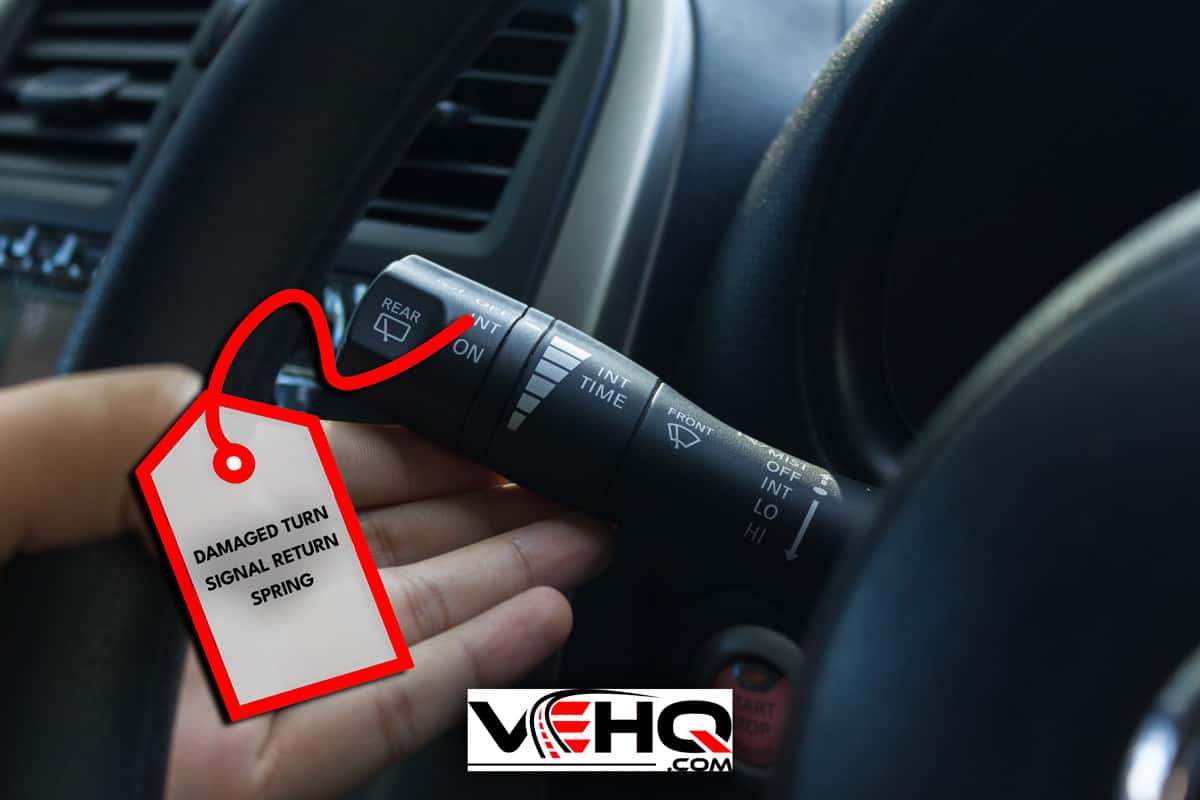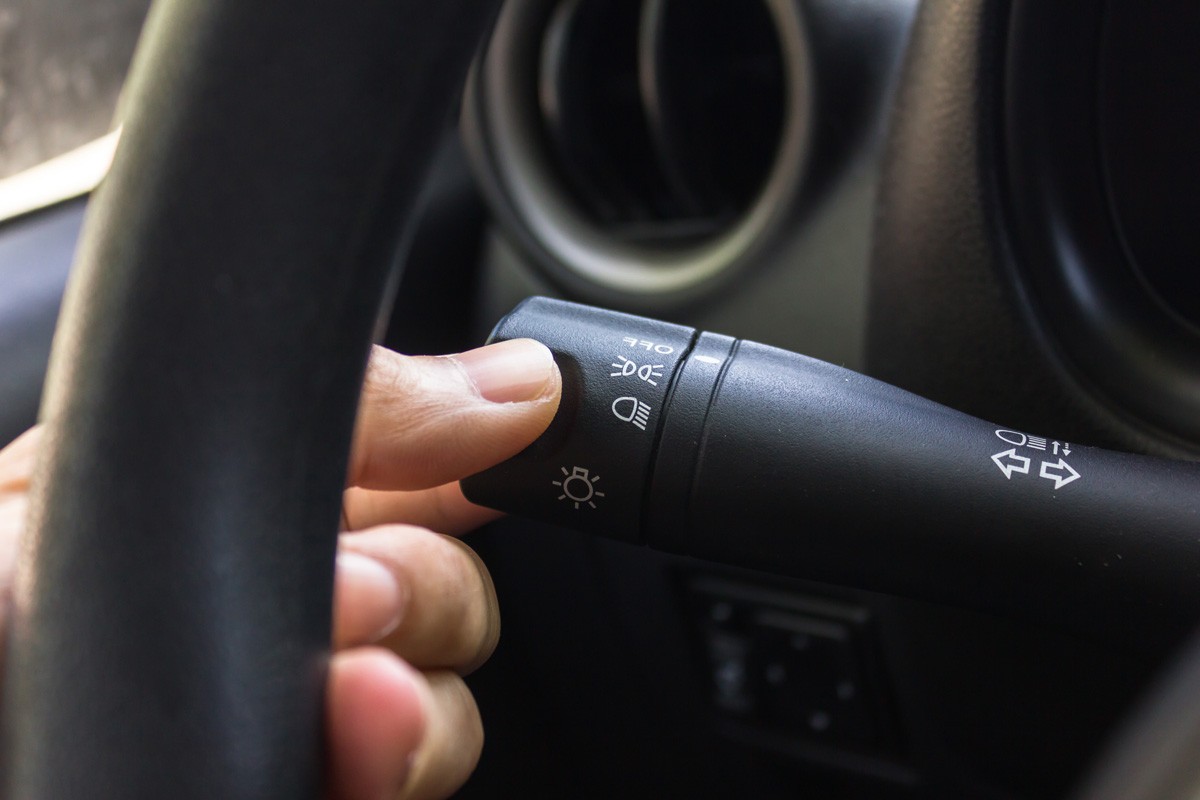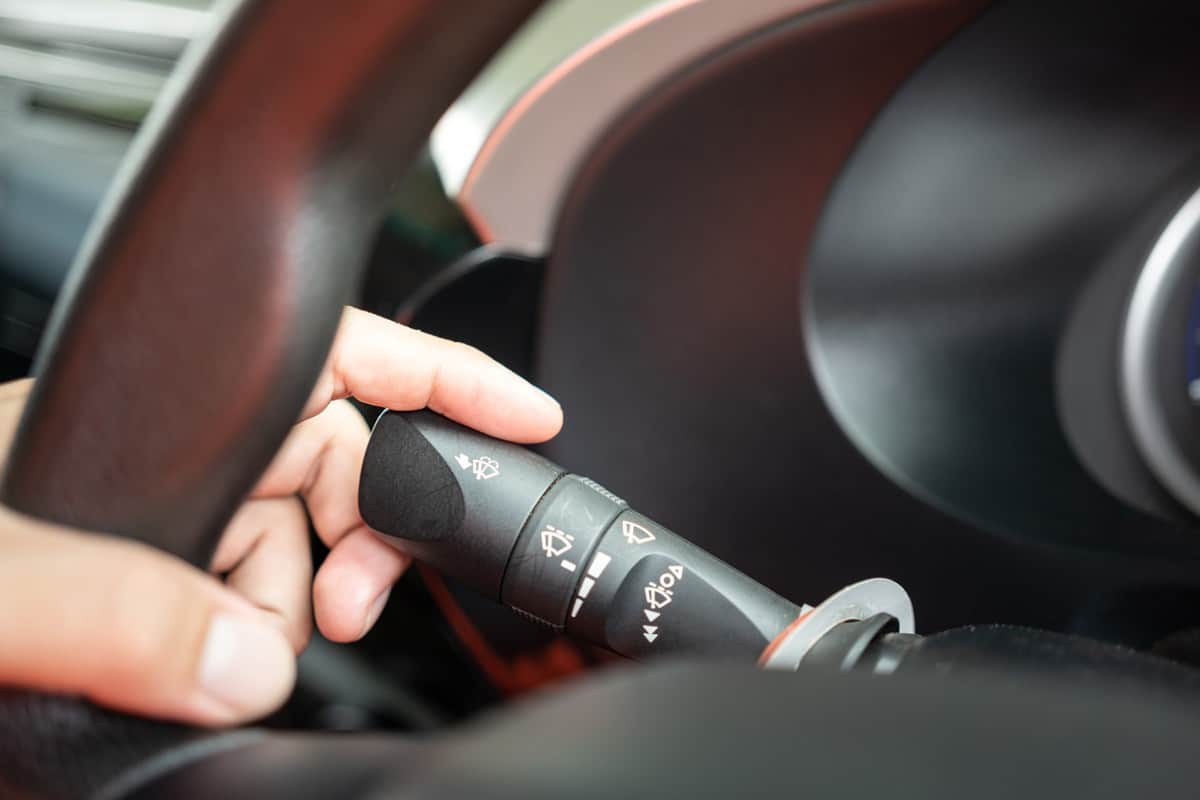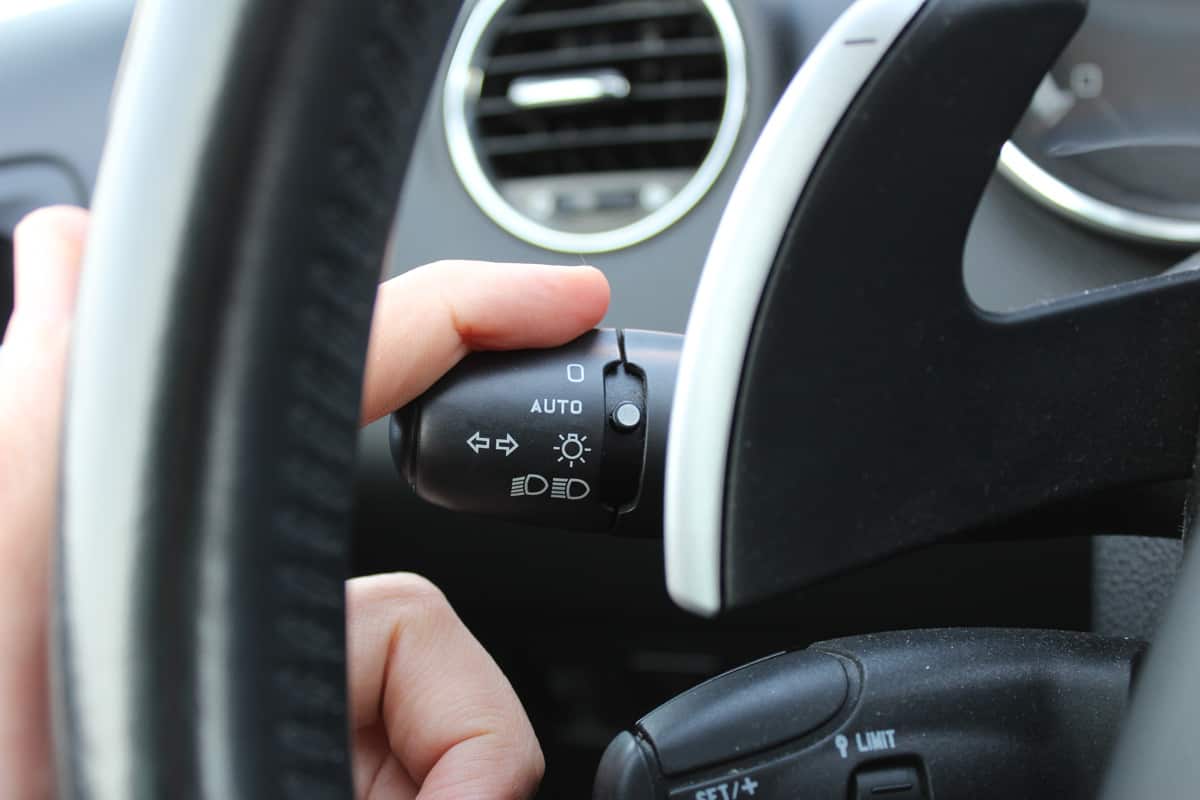You turned right at an intersection, but the turn signal didn't cancel afterward. What do you do? If you're looking for a solution to this problem, you've come to the right place! We've researched this topic and gathered all the information you need to fix this issue.
A broken or damaged turn signal return spring that is forced out of position is most likely the culprit. The turn signal lever will not be able to return to its center position if the return spring has fallen out of place.
You don't want to risk your life and the lives of others by driving with a stuck turn signal. Keep on reading to find out what you should do if your turn signal is stuck, how you can fix the turn signal, and more.

What is a Turn Signal Return Spring?
A turn signal return spring is a spring that holds the turn signal lever in place. It is attached inside the steering wheel with a dedicated space along the steering column shaft. The turn signal lever is attached to the spring's end, which holds the lever in place.
When the car is turned on, the turn signal lever will move up and down due to the force of the spring. This is a safety device because it will prevent you from accidentally turning on the turn signals while driving.
What Happens If the Turn Signal Return Spring is Broken?
The return spring is what moves the lever back to the center position when your car completes a turn. The return spring can break if it has been damaged or bent out of shape.
This can cause the turn lever to not go back to the center position and result in the turn signal lights not canceling.
When a turn signal returns spring breaks, it can be difficult to tell if the problem is with your signal lights themselves or your return spring. It's often not immediately clear which is the culprit, especially if it's your first time facing the problem.
However, you'll know if it's the return spring if the turn signal lever won't go back to the center position after your car completes a turn.
Can You Still Drive a Car With a Broken Turn Signal Return Spring?

If you don't mind manually moving the turn signal lever back to the center position after each turn, you can still drive your car with a broken turn signal return spring.
Replacing a broken turn signal return spring is a relatively simple task and will only take a few minutes to complete, and you're good to go!
Check out this turn signal return spring on Amazon.
How To Replace a Broken Turn Signal Return Spring?
If your turn signal is broken, you might wonder how to replace the return spring. After all, you can find a replacement spring online and don't need special skills to install it.
However, the task is easier than you think. Here are the steps you need to follow:
1. Disconnect the battery
The first step is to disconnect the battery before you begin. This way, you won't have to worry about the airbag going off if something happens.
2. Loosen the airbag
Next, you'll need to loosen the screws holding the steering wheel's airbag. You will find the screws on the back of the steering wheel.
3. Remove the airbag
You will find some wires attached to the airbag. Gently pop out the clip that locks the airbag and the wire together using a screwdriver. You may also find the horn wire there.
You can remove the horn wire by gently twisting it counterclockwise and pulling it out. After you've detached the wires from the airbag, you may now pull the airbag out itself.
4. Remove the bolts
Next, remove the nuts and bolts that hold the steering wheel assembly housing using a socket wrench or ratchet. Once the housing is out of the way, you will be able to see how the parts fit together.
5. Remove the snap rings
Next, you will need to remove the snap rings holding the coil. Use a snap ring plier to pry the snap ring off the coil.
You may find a wire on the back of the coil. Gently pull it out and extend it a little more so that it will hang and won't interfere with removing the spring-loaded steel plate.
6. Remove the spring-loaded steel plate
Finally, you'll need to remove the spring-loaded steel plate. Fasten a steering wheel puller on the steel plate to remove it. Once you've removed the steel plate, you'll see where the turn signal return springs are attached.
Check out this steering wheel puller on Amazon.
Here's a video explaining each step in detail:
What are the Signs of a Bad Turn Signal Switch?
The turn signal switch is a crucial component of your vehicle's safety and functionality. This small lever is often the first of the car's components to fail, so knowing how to repair it is an essential step in keeping your vehicle safe.
The turn signal switch is a tiny mechanical device that controls your car's turn signals. It tells the car when to turn on the lights. The turn signal button sends a signal to the light control module (ECU) that turns on the left and right tail lights.
If you notice that the turn signal switch is not working or the tail lights are not lighting up, you need to check it out immediately. The first thing to check is if the switch itself has any loose connections.
A loose connection can be fixed by using some electrical tape. After pulling the switch out of its housing, apply a bit of electrical tape along the outer edge of the connection. Once you have done that, put the switch back into its housing and tighten the screws.
If there are no loose connections, but the lights still do not work, you may have an issue with either the light control module (ECU) or a bad turn switch.
You will need to consult a professional to replace your car's turn signal switch, or you can replace it yourself by following the guide below.

How to Replace Turn Signal Switch Assembly
Some car models from the year 2005 and above may require you to replace the entire turn signal switch and lever. This is a much easier task than replacing the return springs. Here are the steps to follow:
1. Disconnect the battery
Again, you will be working on the steering column, and you don't want the airbag to get in the way. Disconnect the negative battery cable from the battery.
2. Remove both the top and bottom plastic casing around the steering wheel.
You will find two or more bolts behind this plastic casing. Loosen the bolts. Additionally, you may have to dislodge the trim clips holding the plastic casing in place after the bolts are loosened.
You don't have to remove the steering cover. Just make enough space for you to pull the switch out.
3. Remove the turn signal switch
The turn signal switch is usually held by plastic clips that you can pry off with a small screwdriver. Disconnect the wires that are connected to the switch assembly. Gently pull the switch assembly out.
4. Install the new switch assembly
Reconnect the wires to the new switch assembly. Lock the new switch assembly into place on the steering column. Push it down until it snaps into place. Follow the steps in the reverse order to complete the replacement process.
Here's a video showing how to replace your turn switch:
What Is The Most Common Cause of the Turn Signal to Not Working?

The most common cause of turn signal problems is the fuse. A blown a fuse could cause a car not to turn on its lights. If it is not blown, the problem is likely bad ground or a broken bulb.
When one of these fuses has blown, you can be sure there's a short circuit with one of your car's electrical components.
The fuse panel is located under your car's hood and contains many fuses that must be checked at regular intervals.
These fuses are responsible for protecting electrical components from high voltage. Their primary function is to interrupt the flow of electricity in case of an electric overload.
Final Thoughts

Understanding how to use a turn signal properly before hitting the road is crucial. Make sure that the signal lights up when you want to turn the steering wheel.
Check the condition of the signal lights after a while to see if they have any problems. This way, you will not be surprised by an unexpected signal failure while on the road.
You might also like these posts:
Oil Light Comes On When Turning; What's Wrong?
Headlights And Dash Lights Flicker While Driving—What's Wrong?


